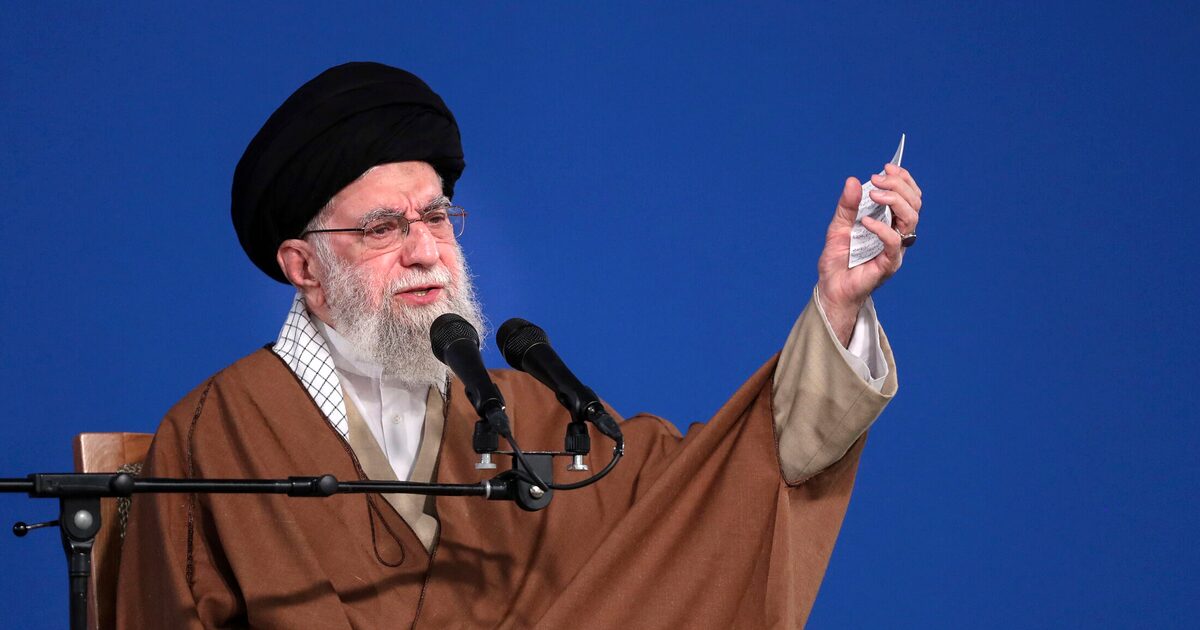For more than three decades, the Islamic Republic of Iran has mastered the art of diplomatic deceit. At the helm of this elaborate theater is Supreme Leader Ali Khamenei — an aging dictator who thrives on contradiction, misdirection and manipulation.
As the 2024 U.S. election approached, Tehran prepared a new trap: to lure Donald Trump, Benjamin Netanyahu and their allies into another cycle of false hope, delay and strategic exhaustion. This is not diplomacy — it is deception. And once again, the West is falling for it.
Khamenei has repeatedly declared that negotiations with the United States are dishonorable. “Negotiation is humiliation,” he said. “There will be no war, and no talks.” But months later, when a letter from newly installed President Trump arrived, the regime’s posture shifted overnight. Tehran’s foreign minister — closely tied to the Iranian Revolutionary Guard/Quds Force — publicly stated that the regime is not opposed to negotiations and prefers “indirect talks.”
This abrupt reversal is not surprising. It fits a long-standing pattern of raising ideological banners in public while quietly maneuvering behind the scenes. The objective is not peace but confusion. Khamenei’s regime thrives when its enemies are disoriented, when strategic clarity is replaced by contradiction and mixed signals.
The regime knows Western democracies are media-driven, politically divided and constrained by time. By alternating threats with vague diplomatic gestures, Tehran manufactures the illusion of moderation — just enough to delay retaliation, reduce pressure and buy time to further its nuclear ambitions.
This is not the behavior of a rational state seeking stability; it is the calculated manipulation of a regime that uses diplomacy as camouflage and ambiguity as a shield. The goal of Tehran’s current signals is not to reach a deal, but to wear down decision-makers like Trump and Netanyahu.
As Tehran faces growing isolation, three dangerous scenarios are now in play.
First, Tehran may withdraw from the Nuclear Non-Proliferation Treaty, ending even the symbolic oversight of the International Atomic Energy Agency. Such a move would amount to open defiance and could trigger preemptive military action from Israel or the United States.
Second, the regime may be preparing a nuclear breakout. Iran already possesses enough enriched uranium for several bombs. Years of negotiations and stalling have brought it perilously close to a nuclear threshold. The bomb has never been a bargaining chip — it has always been the ultimate goal.
Third, and least likely, is total capitulation. That would require dismantling Iran’s nuclear program, ending its proxy wars, and scaling back the Islamic Revolutionary Guard Corps. It would demand nothing less than a full regime transformation — something Khamenei and his inner circle would never accept. In other words, they would rather risk war than relinquish control.
None of these paths leads to peace. Each either prolongs instability or escalates toward open conflict.
Adding to the complexity are the real architects of tension within the regime itself. Inside Iran’s deep state, powerful actors benefit from a constant state of crisis. A variety of actors — including the Revolutionary Guard, those profiting from sanctions, black-market smugglers and hard-line clerics — have no interest in normalization. A militarized, sanctioned and permanently tense environment allows them to dominate the economy, crush dissent and tighten their grip on power. For these players, peace is not profitable; crisis is.
This is why the regime engineers fabricated stories such as the recent claim that Quds Force commander Esmail Qaani delivered messages of restraint to Tehran’s regional proxies. These psychological operations aim to create the appearance of moderation, to convince the West that Iran is stepping back. But it’s all an illusion — scripted theater designed to manipulate international perception.
The regime’s contradictory messaging to the West is not due to internal confusion. Reports of interest in de-escalation are carefully leaked alongside leaks of military escalation. This dual narrative creates policy paralysis in Washington, Brussels and Tel Aviv. Debates ensue. Action is delayed. Time is lost.
Every time international pressure mounts — whether during the Trump administration’s maximum pressure campaign or during heightened Israeli warnings — the regime rolls out the same playbook: secret messages, indirect talks, and sudden, hollow gestures of flexibility.
But there is one scenario that truly threatens the regime: collapse from within. The Iranian people have repeatedly demonstrated their rejection of the Islamic Republic’s brutality and repression. From the 1990s protests to the more recent nationwide uprising, they have demanded dignity, freedom and a democratic future.
Unlike the regime, they do not chant “Death to America.” They seek peace, freedom, prosperity and global engagement. But unless the international community stops legitimizing the regime’s manipulation, the Iranian people will remain caught between internal brutality and external passivity.
The Islamic Republic of Iran is not sending mixed signals — it is playing a calculated, deceptive game. Khamenei is not moderating; he is maneuvering. And any American or Israeli leader who believes they can out-negotiate or outwait Tehran will find themselves once again tangled in a familiar trap.
The time for illusions is over. No more false hopes. No more strategic patience. No more legitimizing a regime that thrives on crisis, repression and lies. This dictator has played his final hand. It’s time the West stopped playing along.
Erfan Fard is a former counterterrorism analyst and author of the book “Regime Change in Iran.”
